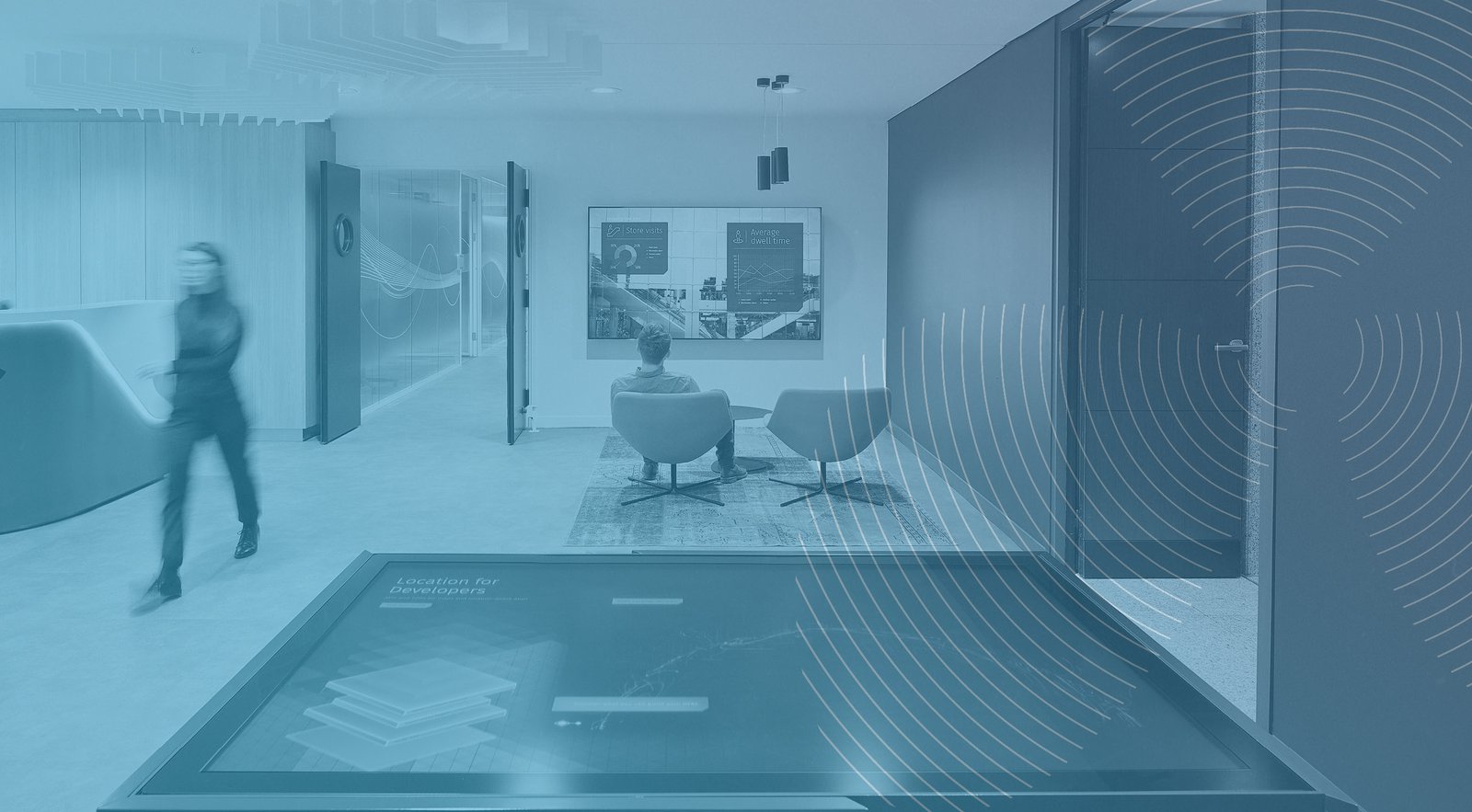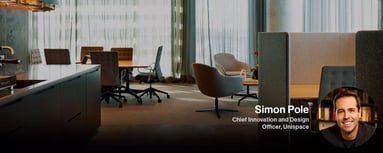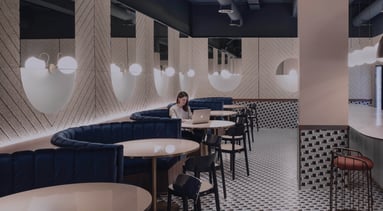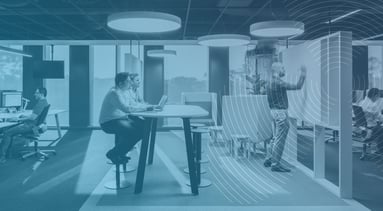
Covid-19 has accelerated the technological pace of change for law firms.
The coronavirus is changing the way law firms adopt, accept and deploy a range of technology, including collaboration tools and AI.
Before we begin looking specifically at law firms, it’s worth exploring how businesses have adapted to remote working and hybrid/blended working. This can tell us a lot about the psychology of technology adoption, but there’s still work to be done on unpicking this.
Before you continue reading, be sure to get your free copy of; 'Threshold: 21 Influences on the Legal Workplace', click here to request.
Back in 2018, Unispace conducted research with Facebook around who would occupy the tech firm’s new San Francisco HQ in 2030. We found that Gen Y and Z were successfully handling all four work modes (focus, collaboration, learning and socialising) – simultaneously on multiple screens and devices. We saw this as the first true digitisation of the office, and the direction in which we were all heading.
Cut to March 2020 and a large percentage of office workers were plunged into working this way. It took just a few weeks for every generation to achieve what might otherwise have taken 10 years: this may have been the fastest change-management program in history. The technology was previously available, and well tested and implemented by others, so why weren’t the majority of law firms already using it – at least to an extent that suited both individuals and the firm? Perhaps:
- The transition to a digital, remote way of working was not an opt-in: most had no choice but to adopt it
- A sudden, major change focuses the mind more powerfully than gradual change
- Wholesale change makes it harder for pockets of resistance to develop (e.g. complaining about a change in a minor upgrade to one app)
- The change affected everyone – rather than a pilot program in a non-relevant department or practice group, with just one team or department being asked to change
- When pushed, people don’t necessarily need to be spoon-fed – they’re motivated to get up to speed and ensure they don’t get left behind. (They can do it – their children are usually using better and more flexible technology at school!)
- People respond when they see the common benefit (keeping everyone safe, in this instance)
- People respond when they see a personal benefit (a better work/life balance, less commute time, etc)
For some law firms, the transition to digital remote working was an opportunity to find the budget for, and to implement, technologies and tools they’d been requesting for years.
However, some firms didn’t see the need to invest in technology solutions to enable flexible working, and they remained in the office. And those who couldn’t went home with filing cabinets, printers and desktop computers.
Space: the impact of remote digital working on the legal office
Lawyers attach real importance to face-to-face meetings, so it’s interesting that, pre-Covid, they stuck with audio only for their conference calls – via Polycom or speaker phones. After all, Skype launched in 2003, so law firms could easily have been adding video and getting closer to that face-to-face feel. Plus, they were already suited and booted, sitting in a smart office with an attractive backdrop.
Perhaps the conference call was seen as too much of an unappealing alternative to personal contact. Real-life meetings extended hospitality, and were a physical demonstration of what success looks like. Perhaps it was a way to hold audiences captive, or of reinforcing relationships. So now, with video-conferencing an everyday occurrence, a few questions arise for law offices:
• Will the relaxing of formalities (speaking from the kitchen at home, for example) challenge the need for such formal meeting/client spaces in future? Can more traditional law offices become more relaxed when it comes to client culture, spaces and interior design, too?
- Do clients need to come into the law office at all? Is the client meeting suite largely obsolete?
- If there are fewer client spaces, should video-conferencing and collaboration technology be significantly upgraded, for working with both clients and remote colleagues?
- Can the freed-up space be put to better use? For example, multiple smaller collaboration spaces, more employee amenities, flexible adaptive innovation spaces, client co-creation zones, etc.
Fusion: blended workspace, blended virtual environments
Some traditionalists, or those who weren’t already ‘digital natives’, challenge the idea that deep collaboration can happen virtually. But we’ve seen that it can work. It’s possible to set up digital portals between locations, featuring a live feed to simulate working next to your colleague – so you can collaborate, focus and share in real time. We call these ‘virtual wormholes’, drawing inspiration from Einstein’s theory of time.
Human holograms may come, but they’re currently prohibitively costly. For now, virtual headsets for remote collaboration are becoming a strong contender: we’ve worked with a Facebook subsidiary, the virtual reality technology company Oculus, which already pitches itself not only at the gaming community but at businesses, too. They see the future of meetings in VR, as do Microsoft and Magic Leap, who’ve developed augmented reality headsets as seen in the medical field: the digital and physical world as one.
Technology is also blending into the way firms use their offices. Our research shows that offices or desks will be unoccupied up to 60% of the time in future, as people work remotely. As a result, we’ve seen a huge surge in requests for booking systems, enabling people to book undesignated rooms and workpoints via an app. The data from the app could then feed into sanitising routines, so that cleaning is done when and where it’s needed. This may alleviate some of the anxiety of desk-sharing/hot-desking.
“Get used to 3D holographic images, avatars, and virtual and augmented reality taking up shop in your office… The benefits are obvious – virtual meetings reduce the need for office space and air travel.”– Stefanini, 2020
What impact has COVID-19 had on the legal workplace?
Download the report 'Reluctant Returner: A Legal Perspective' to gain insight into key learnings from the post-Covid legal workplace in our study of 3,000 office workers and 2,750 employers across Europe.


